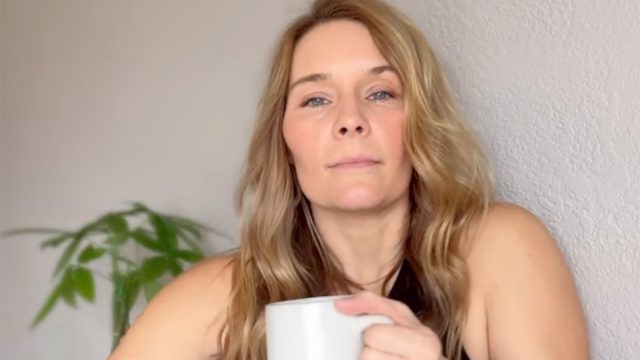4 Protein Tricks That a Hormone Expert Swears By to Melt Perimenopause Weight

Are you in perimenopause and struggling to lose weight, even though you are eating more protein and walking a lot? There are a few tricks nobody is telling you about, says an expert. Holly McEwan is a Perimenopause & Hormone Coach who is "taking the guesswork out of perimenopause symptoms, hormone changes, supplements & HRT," she writes in her social media bio. "You've probably heard it a million times," she writes. "Eat more protein and walk every day—that's the secret to weight loss in your 40s!" However, "while protein and walking (aka steady state cardio) ARE essential, they're only part of the picture." Here is everything you need to know that people aren't telling you.
As You Age, So Should Your Approach to Weight Loss
According to McEwan, "what no one is telling you is that as your hormones change… your metabolism, muscle mass, body fat, and appetite also change," she writes. "So here's the missing piece that you need to know: timing of eating matters (and the timing of your protein), and just walking isn't enough."
RELATED: 20 Foods You Didn't Know Were Ultra-Processed
Start Your Day with Protein
The first thing you should do is start your day with protein, 30 to 40 grams. "It stabilizes blood sugar, curbs cravings later in the day, and keeps energy and blood sugar steady," she says.
Strength Train Twice a Week
Next, strength train at least 2x a week. "Walking is great, but muscle is your metabolism's best friend. Lean muscle will raise your metabolism, help manage blood sugars, and keep your bones strong," she says.
Eat Before and After Workouts
Her next tip is to fuel before & after workouts. "A small protein snack before, and a balanced, high-protein meal after will help lower cortisol levels, build lean, toned muscle, and help minimize that hormone-related fatigue," she says.
RELATED: I Got My Best Body After 50 and Here's How You Can, Too
Don't Undereat
Finally, don't undereat! "Too few calories increase stress hormones (hello, belly fat) and slow metabolism over time. Aim for just a small calorie deficit each day," she says.
As You Age, Your Old "Weight Loss Tricks" Won't Work
"Feeling like your old weight-loss tricks don't work anymore? You're not crazy, and you're not alone. Your body is different now—but that doesn't mean you can't feel strong, energized, and in control again," she concludes. And if you enjoyed this article, don't miss 12-3-30 Walking Method: 20 Proven Tips to Lose Weight Faster.




